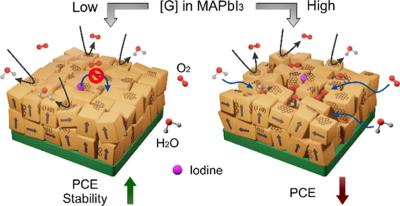Recent research has shown that the incorporation of graphene-related materials improves the performance and stability of perovskite solar cells. Graphene is hydrophobic, which can enhance several properties of perovskite solar cells. Firstly, it can enhance stability and the passivation of electron traps at the perovskite's crystalline domain interfaces. Graphene can also provide better energy level alignment, leading to more efficient devices.

In a recent study, Spain-based scientists used pristine graphene to improve the properties of MAPbI3, a popular perovskite material. Pristine graphene was combined with the metal halide perovskite to form the active layer of the solar cells. By analyzing the resulting graphene/perovskite material, it was observed that an average efficiency value of 15% under high-stress conditions was achieved when the optimal amount of graphene was used.
Tuning and balancing the graphene content led to enhanced photovoltaic characteristics. Final photoconversion efficiency is increased, degradation is delayed, grain size is increased, and nonradiative recombination is reduced. The team concluded that this was due to partial sealing of grains without significant changes in their morphology and enhanced porosity.
The results of this study demonstrate that doping lead iodide perovskite materials with layers of pristine graphene improves the overall stability and electrical performance of perovskite solar cells. The research provides a significant stepping stone for the future use of pristine graphene and other graphene-based materials to create low-cost and efficient graphene/perovskite photovoltaic solar cells.



